I hope to introduce you to the world of the microscope and microscopic life, as experienced by members of The Postal Microscopical Society.
In the Microscopes: Nature Revealed exhibition at the National Museum of Scotland one of the themes that are explored is the formation of microscope clubs and societies in the 19th century. On the exhibition banner the Postal Microscopical Society was spoken of in the past tense and our society is keen to highlight that the Postal Microscopical Society, established in 1873, is still going strong in the 21st century.
So in this guest post, I will give an insight into the formation of the club and how the essence of the Society remains the friendly and helpful interchange of information. My principal role in the society is as Secretary, but I am also one of the Circuit Secretaries responsible for sending out boxes of slides each month, receiving them back at the end of each ‘circuit’ and maintaining the collection and the supply of boxes.
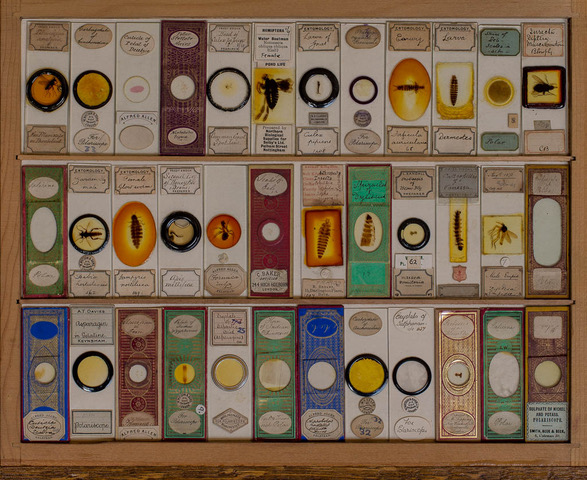
A tray from a slide cabinet, showing 36 microscope slides some of which are over 100 years old
Origins of the Society
There were vast improvements in the optical microscope in the first half of the 19th century, and this led to a surge of interest in the instrument, both from scientists and interested amateurs from all walks of life. For a number of Victorians, it became a recreational resource, and a number of societies were set up, of which nationally there are only now a few that remain. These are the Royal Microscopical Society (RMS) the Quekett Microscopical Club (QMC) and the subject of this article The Postal Microscopical Society (PMS).
The origin of The Postal Microscopical Society is thought to be a letter written by Alfred Allen to the monthly periodical Science Gossip in 1871 suggesting the idea of a postal club involving the exchange of slides and knowledge. Two years later a Mr Alfred Atkinson sent in a similar letter to the periodical, which started a dialogue that resulted in a dozen members forming a society.
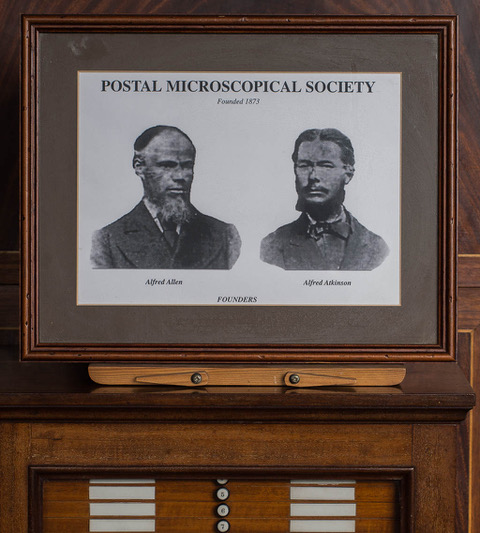
A photograph of the two founding members of the Society, Alfred Allen (left) and Alfred Atkinson (right)
Unlike today, where a box of around a dozen slides, with notes in a notebook are sent out onto each circuit, in the early days a box started with just one slide. Each successive member then added a slide, there being a dozen by the end. When the box was re-circulated each member took their slide out and replaced it with another.
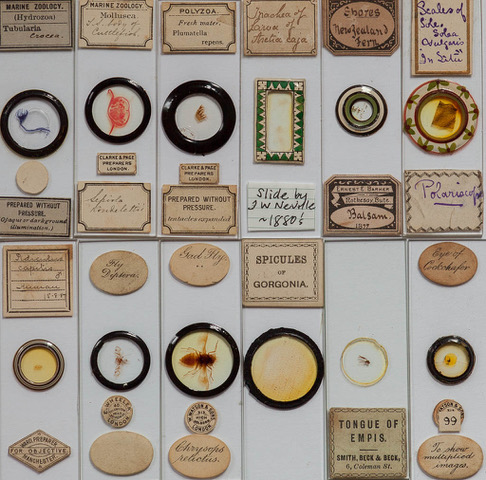
Close up of slides., with descriptive labels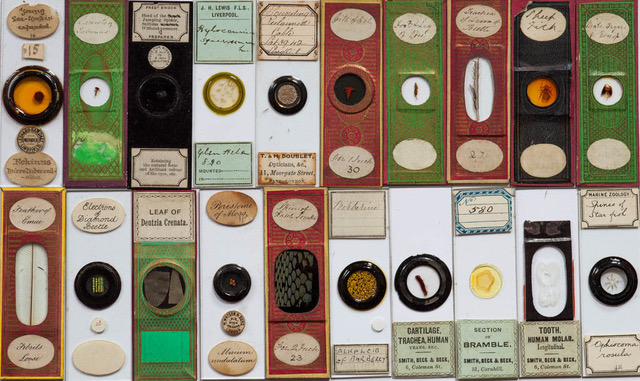
Close-up of slides, some are paper covered and others have protective rings 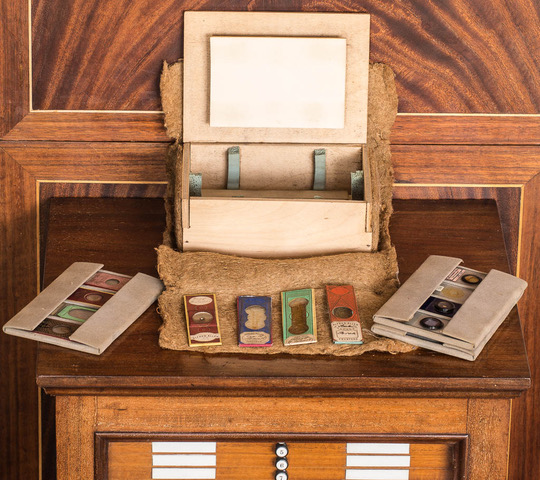
A very early postal box with protective felt and slide holders designed to withstand the rigours of travelling
Later, as numbers increased, the Secretary and some other members made notes and drawings to accompany the slides. The Society has some of these notebooks, and they often include impressive illustrations.
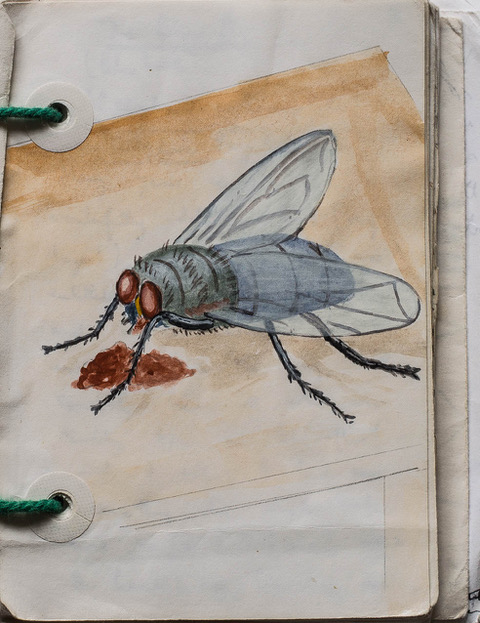
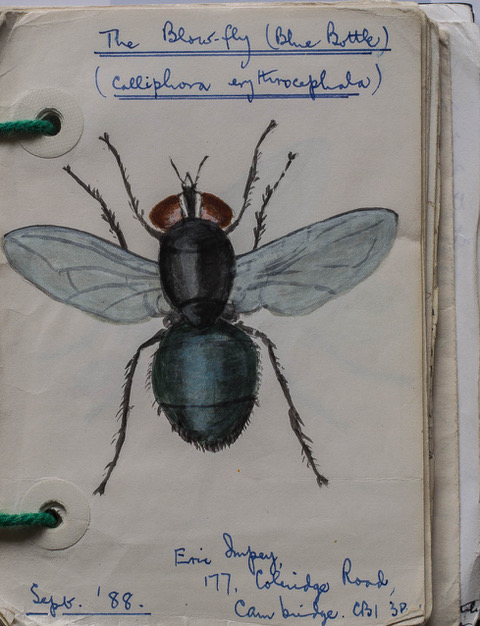
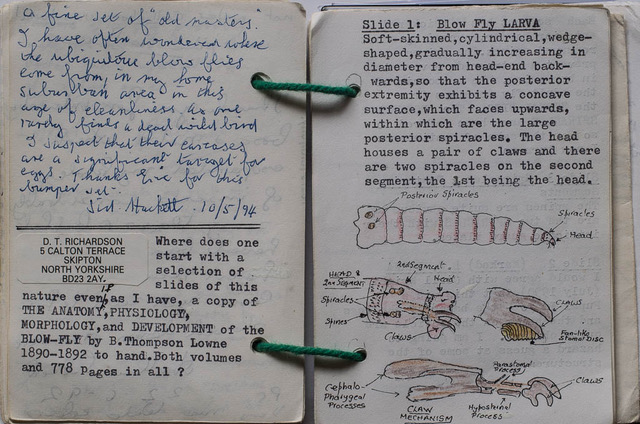
Some examples of the notebooks, which often contain exquisite drawings
Members were also offered a Journal, the first being in 1882, and bound copies of these are sometimes found at antiquarian book fairs, and have considerable scientific value, even today.
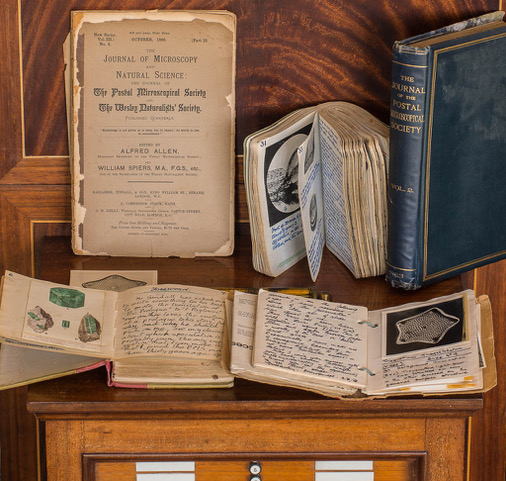
Examples of older notebooks and journals
As may be imagined in any Society, there were many highs and lows. Officers died, and it was sometimes difficult to find someone willing to replace them or able to put in the time required. The two World Wars had a disastrous effect and in 1929 the membership reached a low of 21, putting the viability of the Society in question. In addition, postal charge rises have, and still do, cause problems. Thankfully, we currently have a healthy membership of several hundred people and modern printing methods results in less wastage in terms of our publications.
Today’s society
So, what happens in The Postal Microscopical Society in the early 21st century? The principal objective is still the circulation of boxes of microscope slides illustrating the work of members and/or that of professional mounters. Members are organised into ‘Circuits’ and boxes of slides are circulated, at four-week intervals, accompanied by notebooks in which each recipient records his comments, criticism, and perhaps additional notes on the mounts themselves, before passing the box on to the next member of his ‘circuit’.
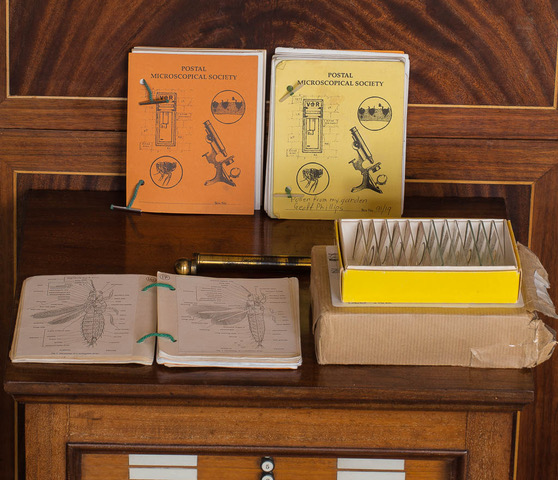
Current notebooks and slide boxes and packaging used for sending slides in the post
As each box will normally contain 12 slides, each member has the opportunity to study many different slides during the year. It is rare to receive a box which does not provide some level of interest and enjoyment to all individuals, regardless of their main field of interest; often the difficulty is to part with the box again. Members are actively encouraged to participate, by making their own slides available for circulation, and this aspect is the ‘lifeblood’ of the Society. The members are mostly amateurs with an interest in the microscope and microscopy, so the subject matter varies greatly. Some are interested in instrumentation, or techniques, others specialise in petrology and making thin rock sections, others are fascinated by the hidden microscopical world to be found in water, such as diatoms or protozoa.
The essence of the Society is the friendly and helpful interchange of information. Help is offered to beginners and experts alike by fellow members with experience or specialised knowledge in particular fields. Thus, help is only a postage stamp/phone call/email away and the beginner has access to a mine of information.
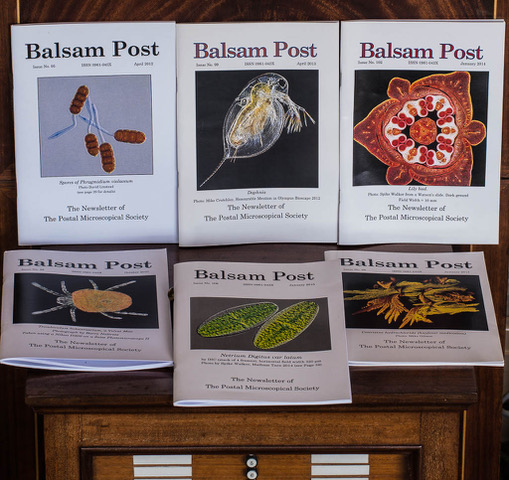
Modern copies of the publication ‘Balsam Post’ issued to members 4 times a year
The Balsam Post, the Newsletter of the Society, is published four times a year. Written by the members for the members, this is another source of advice, news, help and guidance. All members are encouraged to write on any subject linked to microscopy and natural history, so a comprehensive index is now available.
Several meetings are held between March and October, where members share techniques, examples of their slides, photomicrographs and there are usually a number of well-illustrated talks.
Microscopes: Nature Revealed is on display at the National Museum of Scotland until 15 September 2019.